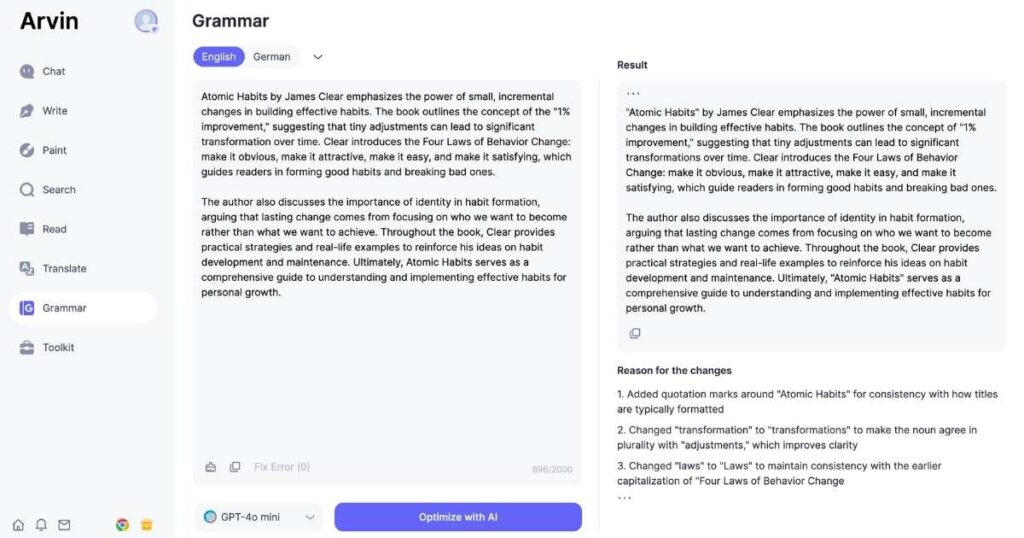What is a split infinitive? Split infinitives might sound like a technical grammar term, but they’re actually a natural part of modern English. A split infinitive happens when a word—often an adverb—comes between to and the base form of a verb. For example, to boldly go is a split infinitive because boldly interrupts the infinitive phrase to go.
What Is an Infinitive?
An infinitive is the raw, untamed form of a verb, often accompanied by the word to. Think of it as the action in its purest form—free from tense, subject, or responsibility.
Examples of Infinitives
- Basic Examples:
- To dance
- To binge-watch
- To innovate
- In Sentences:
- Taylor Swift loves to write songs that hit us right in the feels.
- We plan to visit Paris, the city of lights, next summer.
- *He wants to design a fashion line inspired by Barbiecore.
What Is a Split Infinitive?
A split infinitive occurs when an adverb or other word is placed between “to” and the base form of a verb in an infinitive phrase.
Example:
- Split Infinitive: She decided to completely change her career.
- Unsplit Infinitive: She decided to change her career completely.
While traditionally frowned upon, split infinitives are widely accepted today, especially when they improve clarity, rhythm, or emphasis in writing.
Think of it this way: split infinitives often mimic how we naturally speak, and sometimes avoiding them can result in clunky sentences. So, while it’s good to know the rules, breaking them gracefully is often the best choice.
Split infinitives are often about rhythm and style—just like your writing. Trust Arvin AI’s Grammar Checker to help you decide what works best.
What Is a Split Infinitive Example
To boldly go where no one has gone before.

I need to quickly grab a coffee before the meeting.
- Why It’s Split: Quickly splits to grab.
- Revised (but awkward): I need quickly to grab a coffee before the meeting.
She vowed to unapologetically embrace her reputation.
- Why It’s Split: Unapologetically comes between to and embrace.
- Revised (but clunky): She vowed unapologetically to embrace her reputation.
He promised to completely change his lifestyle.
- Why It’s Split: Completely splits to change.
- Revised (but less natural): He promised to change his lifestyle completely.
They plan to fiercely compete in the championship.
- Why It’s Split: Fiercely is sandwiched between to and compete.
- Revised (but stiff): They plan to compete fiercely in the championship.
What Is the Rule About Splitting Infinitives
The “rule” about splitting infinitives dates back to traditional grammar guidelines that discouraged placing any word between to and the verb in an infinitive phrase (e.g., to boldly go).
However, in modern English, this rule is more of a suggestion than a hard-and-fast rule. Splitting infinitives is widely accepted when it improves clarity, flow, or emphasis.
Confused about split infinitives? Let Arvin AI’s Grammar Checker guide you toward clarity and style. Try it now!
Modern Rule About Splitting Infinitives
Clarity Comes First:
If splitting the infinitive makes the sentence clearer, it’s acceptable.
Example:
- Split: She tried to really understand the issue.
- Unsplit: She tried really to understand the issue. (This version feels awkward and less natural.)
Emphasis and Style:
Use split infinitives when they create emphasis or improve the rhythm of your sentence.
Example:
- Split: He promised to never give up.
- Unsplit: He promised never to give up.
Avoid Over-Splitting:
Overloading an infinitive with multiple words can confuse the reader or clutter the sentence.
Example:
- Over-Split: He vowed to fully and completely without hesitation commit to the cause.
- Better: He vowed to fully commit to the cause without hesitation.
When to Avoid Splitting Infinitives
In Formal Writing:

Some traditionalists may still view split infinitives as incorrect in academic or formal writing.
Example (Avoid Split):
- She aimed to thoroughly analyze the data.
- Instead: She aimed to analyze the data thoroughly.
When It Creates Ambiguity or Awkwardness:
Splitting an infinitive can sometimes obscure the meaning or disrupt the flow.
Example:
- Awkward: He decided to at once leave the party.
- Better: He decided to leave the party at once.
How to Fix a Split Infinitive
Fixing a split infinitive is all about rearranging the sentence to keep to and the verb together without sacrificing clarity, rhythm, or emphasis. While split infinitives are not inherently wrong, there are times when traditional grammar preferences or personal style might call for an adjustment.
1. Move the Intervening Word or Phrase
Place the adverb or phrase outside the infinitive to keep to and the verb intact.
Example:
- Split Infinitive: She promised to completely change her routine.
- Fixed: She promised to change her routine completely.
2. Rephrase the Sentence for Clarity
Reword the sentence to eliminate the split infinitive while maintaining its original meaning.
Example:
- Split Infinitive: He tried to really understand the problem.
- Fixed: He tried to understand the problem fully.
3. Use Alternative Placement for Emphasis
If the sentence feels unnatural after fixing, try repositioning the adverb or phrase in a way that highlights its importance.
Example:
- Split Infinitive: They wanted to quickly finish the Manhattan Project.
- Fixed: They wanted quickly to finish the Manhattan Project.
4. Combine Sentences or Clauses
In cases where fixing the split infinitive makes the sentence awkward, break it into two parts or restructure it entirely.
Example:
- Split Infinitive: I aim to always be there for you.
- Fixed: I aim always to be there for you.
Split Infinitive Examples and Corrections
| Split Infinitive | Correction | Why Fix or Keep It? |
|---|
| The company plans to significantly reduce costs. | The company plans to reduce costs significantly. | In formal writing, avoiding split infinitives can show adherence to traditional norms. |
| She promised to fully understand the implications. | She promised to understand fully the implications. | The unsplit version is more polished for formal contexts. |
| He vowed to completely and permanently change his habits. | He vowed to change his habits completely and permanently. | Reorganizing reduces clutter and improves readability. |
| She hoped to always, without hesitation, speak the truth. | She hoped always to speak the truth without hesitation. | Fixing creates a smoother, more formal tone while maintaining clarity. |
Final Words

Split infinitives are no longer the villains of grammar that traditionalists once made them out to be. Instead, they’re versatile tools that can bring clarity, rhythm, and emphasis to your writing.
The key takeaway? Use split infinitives thoughtfully. If they make your writing clearer or more conversational, embrace them. But in formal or traditional settings, a quick fix may sometimes be the better choice.

Still unsure whether to split or not to split? Let Arvin AI’s Grammar Checker be your guide. With its help, you can refine your writing and strike the perfect balance between style and clarity.
FAQ
A split infinitive occurs when a word is inserted between to and the verb.
Split Infinitive: She decided to boldly go where no one had gone before.
Unsplit Version: She decided to go boldly where no one had gone before.
A split infinitive places a word between to and the verb in an infinitive phrase. It’s not inherently “bad,” but traditional grammar rules discouraged it based on Latin grammar, where infinitives couldn’t be split.
The most famous split infinitive comes from Star Trek: To boldly go where no one has gone before.
In formal or academic writing, where some readers prefer traditional grammar rules. When the split creates ambiguity or disrupts clarity.
A split infinitive happens when a modifier (usually an adverb) is inserted between to and the verb in an infinitive phrase.
In grammar, a split infinitive occurs when a word is placed between the marker to and its verb. While older grammar guides discouraged it, modern English accepts split infinitives when they enhance clarity or style.






